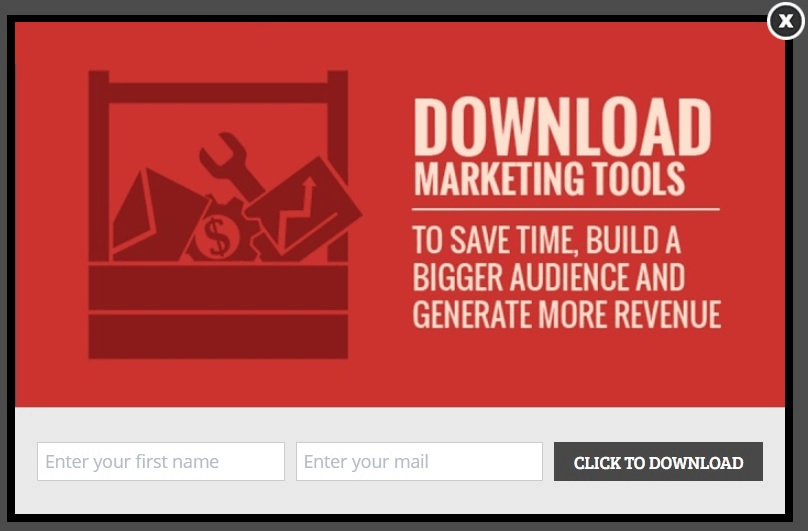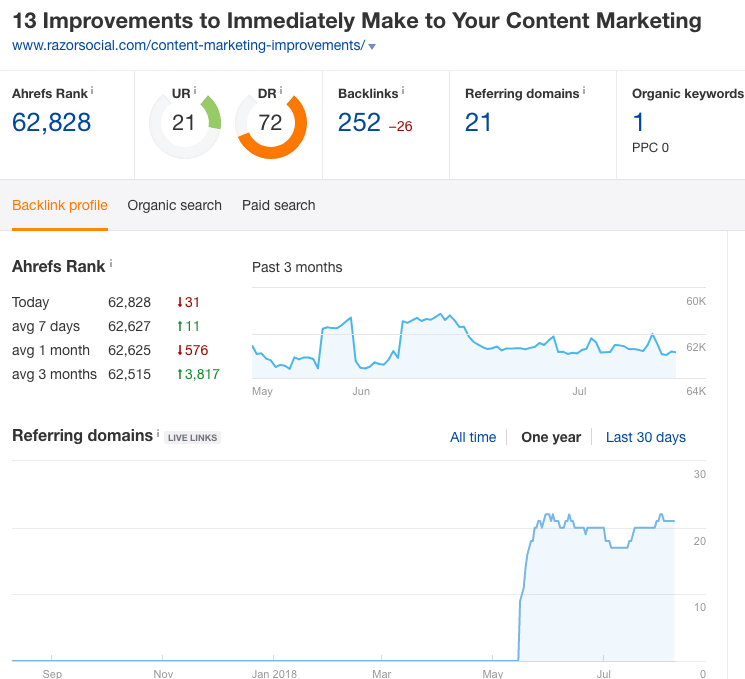
You share it with the world and hope to engage your audience.
But how do you know if it’s working?
Which signals do you look at to understand if your content is actually engaging?
In this article, we’ll share some valuable tips on how you can figure out if your content is doing a good job at engaging your audience.
What do I mean by engaging content?
Let’s put ourselves in the reader’s shoes for a minute.
They may not know the exact definition of ‘engaging content’ but they’ll easily recognize it from the see of other articles that drive absolutely no interest or action.
If your content did not strike a chord with them, they’ll simply move on.
There are plenty of other places they can go to – your competitor’s blog for instance.
But…
If they’re reading a piece of content that interests them, provides answers to their questions, or simply entertains – they will do something, like share or leave a comment.
These actions may take minimum effort from your audience but they still have to be earned.
Now, let’s look at some ideas on how you can tell if your content is engaging or not.
Are people sharing your content?
Shares on a piece of content are one of the first metrics marketers look at when they want to assess engagement.
Naturally, we all want people to like our content enough to share it with their network.
Shares contribute to the organic growth of your audience while giving more ‘social proof’ to your content.
So, how often is your content shared with others?
Answering this question will help you understand if your content resonates with your target audience.
Lots of shares means you managed to create an engaging piece of content.
Here is an example of a guide on our site that got 6 thousand shares:
No shares usually means you didn’t meet the expectations of your audience.
However, before you start thinking your content is not good enough, make sure you made the sharing easy for your readers.
Sometimes, if there are no easy-to-use social share buttons placed conveniently where readers can see them, they won’t bother to look for them to share your content.
If you are on WordPress, I suggest you try Warfareplugins and create custom social share buttons that work great (and look great) both on desktop and mobile.
The great thing about this plugin is that it lets you add custom text and images for sharing on different social networks.
Learn how to achieve 1000% more shares on a blog post.
Do you people comment on your blog posts?
You can tell a lot about engagement just by looking at the comments section on your blog.
Does it look like no one ever reads your posts? Or do your posts attract lively commentary and healthy discussions?
If the latter is true for you – good job!
If not, try to inspire your readers to comment e.g. ask them questions, be genuinely interested in their feedback and opinion, and when you do get comments, make sure to respond and engage them further.
I always respond to people who take time to leave a comment on my blog because it’s a great way for me to build relationships with individuals who read my content and follow my work.
If you build a relationships with people who take time to read and comment on your content, they’re more likely to comment on the content you write in the future.
Are people reading your entire articles?
Do you know how much of your content people actually read?
Statistics regarding consumers’ online reading habits are not at all encouraging for content creators – people read about 20% of the content on a page simply because they do more scanning than reading.
So if you manage to beat those gloomy odds, you can be sure your content is engaging.
Now, let’s see how you can check that:
a). Time on Page. This metric in Google Analytics shows you the ‘time on page’ for people that didn’t bounce. So if someone comes to your website, reads an article, and immediately disappears, Google Analytics has no way of knowing how long the person spent on the article.
Time on page is useful (the longer the better) but you need to know that this is only going to represent a small percentage of your audience.
b) Pages per session. This is a useful metric to help you learn if your website visitors are exploring your site beyond the article that brought them there. If your content is engaging, you should see that readers are clicking through to more pages on your website.
c). Scroll depth. Tools like Hotjar can help you better understand user behavior on your site. With ‘scroll map’ feature, you can see how far down the page users scrolled i.e. if they read your entire article or not.

Learn more about measuring engagement with Google Analytics.
Are you getting any email subscribers?
How many people are getting your newsletter?
I am guessing that you’re asking your readers to subscribe to your newsletter at the end of your articles, your blog’s sidebar, or via lead-boxes in your content.
But do you regularly get new signups and how many?
A healthy inflow of new subscribers is a good indicator that your content is engaging!
So how can you track opt-ins on your content?
If you are using a tool like OptinMonster to grow your email list you can easily track how forms are performing in terms of conversion. The tool integrates with Google Analytics and tracks referral page for every conversion so you can see which content pieces are driving the most conversions.
Here’s a pro tip for increasing opt-ins with your content:
Use content upgrades!
This is a tactic I regularly use here on RazorSocial and I’ve seen a great conversion rate (10% or more) for this type of opt-ins!
You can read about how we increased conversions by 520% with content upgrades HERE.
Content upgrade is a bonus content that you create for a specific blog post and then offer it to readers to access/download in exchange for their email address.
If your subscriber base is decreasing, then it’s pretty obvious that your content is not engaging or valuable enough to your readers.
Getting any links to your content?
Getting organic inbound links to your content speaks a lot about its quality – your content needs to provide tons of value for someone to link to it!
It also means that people were engaged enough to care and point other people to your content.
So make sure to regularly check the number of inbound links your content has earned. With tools like Ahrefs, this is incredibly easy to do.
Just enter the exact URL of the content you want to analyze for backlinks and you’ll get a report showing the number of backlinks, referring domains, new and lost backlinks, and more.
By tracking backlinks to your website you will be able to identify specific pieces of content that are generating the most links.
Ask your website visitors
One of the best ways to understand your website visitors and how they feel about the content you publish is to reach out to them with a short survey.
The feedback you get from your readers will directly speak about the quality of your content and help you inform and optimize your efforts.
You can use a tool such as Qualaroo to create a survey and gather feedback from specific segments of visitors, in this case, those folks who visit/read your blog.
Nice thing about this tool is that it offers pretty decent templates that you can use or you can make your own. There’s also a variety of answer types so you can, for example, give your visitors the ability to leave a comment.
Conclusion
Keeping your audience engaged is a difficult task given that there’s just so much content out there. People today demand instant gratification, so if they don’t quickly get value out of your content, they will leave and probably never return to your website.
But if you keep a close eye on the metrics we mentioned in this article while consistently creating content that takes into consideration interests and needs of you audience, you’ll give them a good reason to stick around.
Is there another way you’re checking whether or not your content is engaging? Do tell us in the comments below!







